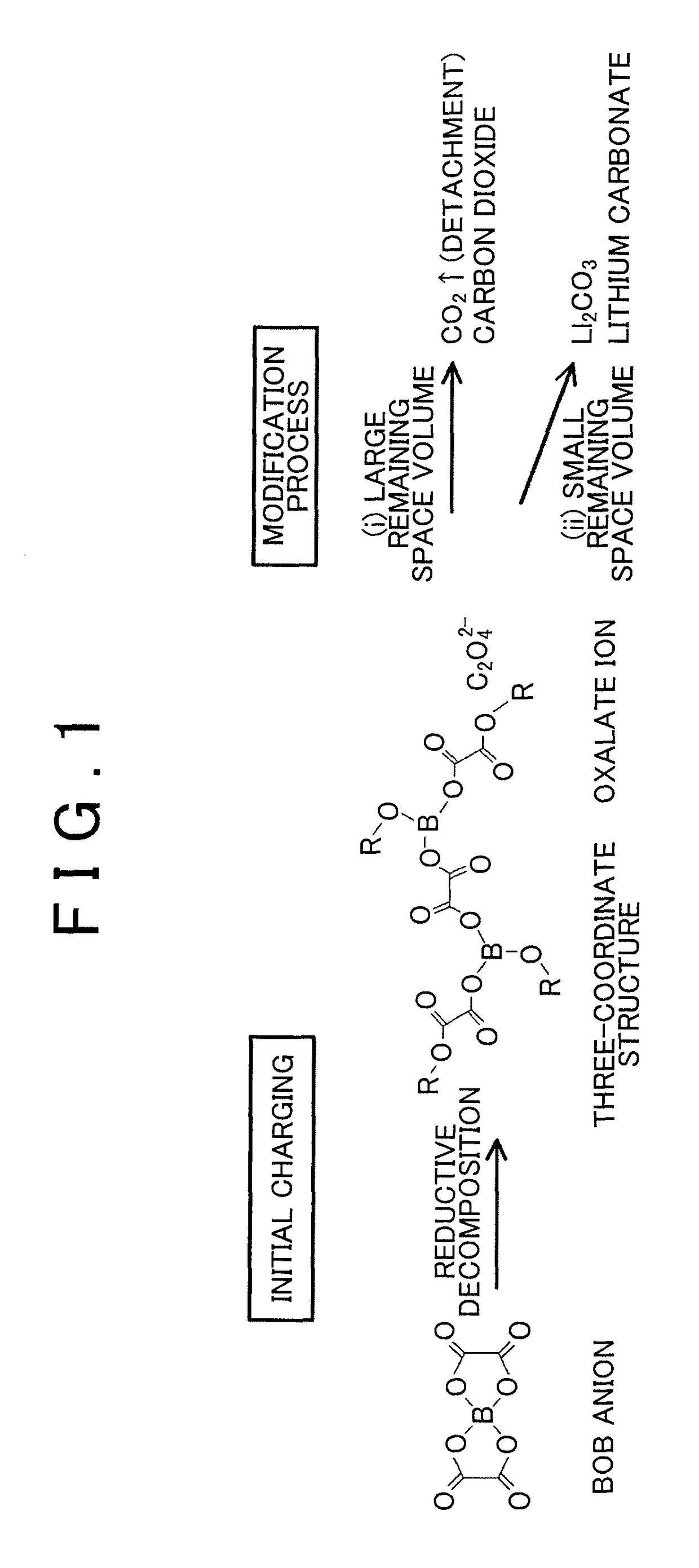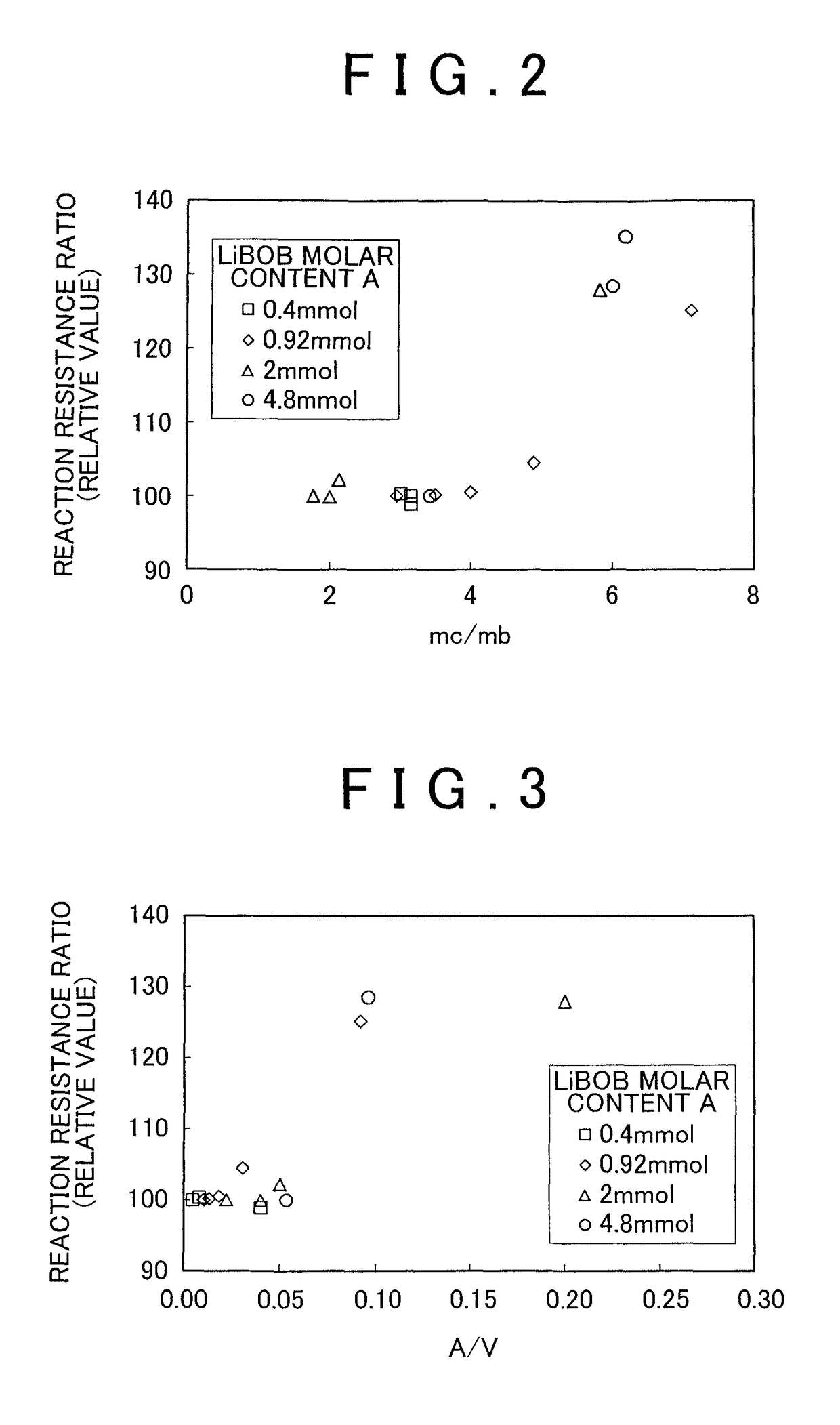Nonaqueous electrolyte secondary battery
a secondary battery and electrolyte technology, applied in the field of nonaqueous electrolyte secondary batteries, can solve the problems of increasing the resistance of the negative electrode, increasing the resistance of the sei film, and reducing the battery performance, so as to reduce the resistance, reduce the resistance, and improve the resistance. effect of the effect of reducing the resistan
- Summary
- Abstract
- Description
- Claims
- Application Information
AI Technical Summary
Benefits of technology
Problems solved by technology
Method used
Image
Examples
Embodiment Construction
[0016]The following describes a preferred embodiment of the present invention. A matter that is not particularly mentioned in the present specification but is necessary for execution of the present invention can be understood as a design matter of a person skilled in the art based on conventional techniques in the art. The present invention can be performed based on what is described in the present specification and a common general technical knowledge in the art.
[0017]A nonaqueous electrolyte secondary battery disclosed herein is configured such that a positive electrode, a negative electrode, and a nonaqueous electrolyte are accommodated in a battery case. The negative electrode includes a film derived from lithium bis(oxalato)borate and containing a boron atom (B) and a carbonate ion (CO32−). The negative electrode is characterized in that a ratio (mc / mb) of a molar content mc of the carbonate ion to a molar content mb of the boron atom is 4.89 or less. Configurations other than ...
PUM
| Property | Measurement | Unit |
|---|---|---|
| D50 particle diameter | aaaaa | aaaaa |
| D50 particle diameter | aaaaa | aaaaa |
| thickness | aaaaa | aaaaa |
Abstract
Description
Claims
Application Information
 Login to View More
Login to View More - R&D
- Intellectual Property
- Life Sciences
- Materials
- Tech Scout
- Unparalleled Data Quality
- Higher Quality Content
- 60% Fewer Hallucinations
Browse by: Latest US Patents, China's latest patents, Technical Efficacy Thesaurus, Application Domain, Technology Topic, Popular Technical Reports.
© 2025 PatSnap. All rights reserved.Legal|Privacy policy|Modern Slavery Act Transparency Statement|Sitemap|About US| Contact US: help@patsnap.com


